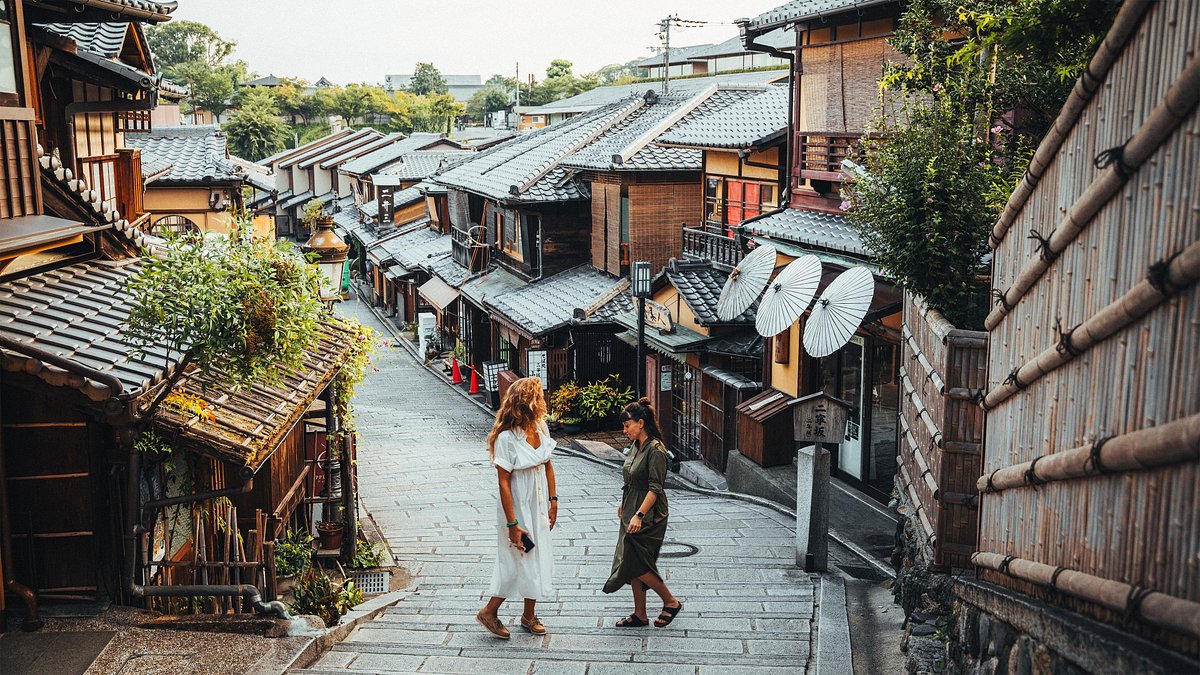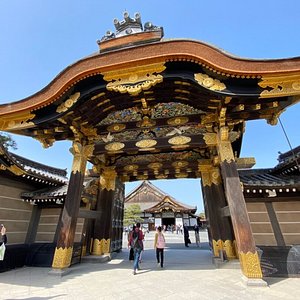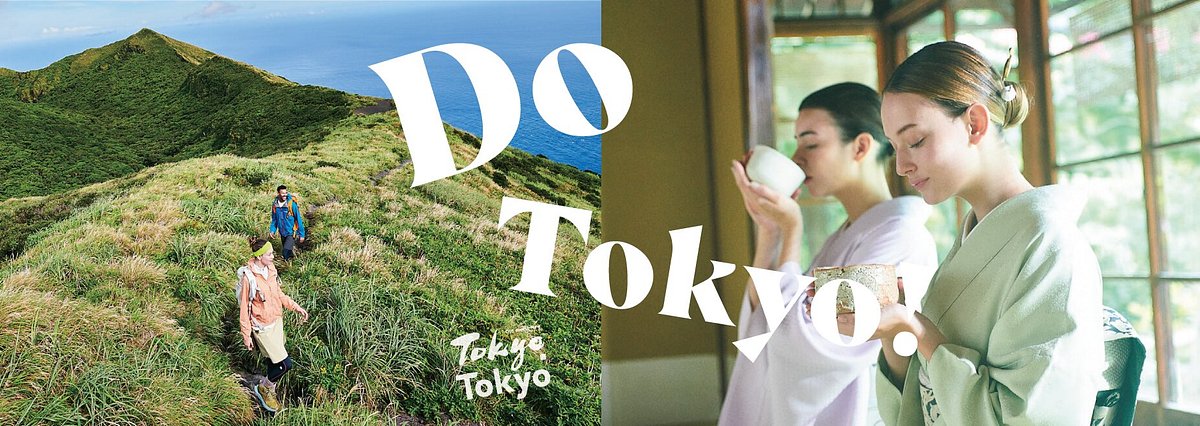3 perfect days in Kyoto


Soak in each moment. Slow down. That's my advice to first-timers who feel like they have to rush to see every shrine and temple in Kyoto. This is a fairly compact city that reveals itself gradually when you're exploring on foot or by bike. One of my favorite things to do is just to wander, getting lost along its hidden gardens and parks and quiet lanes lined with wooden houses.
This three-day itinerary is all about exploring Kyoto's many layers, from eating tsukemono (pickles) at the Nishiki Market to finding the best city views. It also includes tips and recommendations from Tripadvisor users who've been to the city and loved it.
Day One

Morning: Greet the dawn at two amazing temples
Kyoto’s shrines and temples get busier as the day goes on and sometimes close on the early side. So start your first morning in Kyoto bright and early at one of its most iconic sites, the Fushimi Inari-taisha Shrine. Take the train to the adjacent JR Inari Station and plan on arriving between 6 and 7 a.m. to beat the crowds.
Fushimi Inari is the most famous shrine in Japan, dedicated to the Shinto god of rice. It is immediately recognizable from its thousands of red torii gates that line the path heading to the summit of Mount Inari.
Hiking to the summit of the mountain and back will take two to three hours, but many people go only as far as the Yotsutsuji intersection because there are fewer torii gates beyond this point. It will take 30 to 40 minutes to reach Yotsutsuji.
Now it’s time to visit Kiyomizu-dera Temple, a UNESCO World Heritage site and one of the most celebrated temples in Japan. Getting from Fushimi Inari to Kiyomizu-dera can be difficult; the most convenient way is to take the Keihan train to Kiyomizu-Gojo and walk 10 minutes to the temple. The good news: There are signs guiding you to the temple from the station.
The view from the temple is spectacular. It’s beautiful at any time of year, but especially in spring and fall. There is a lot to see you, so set aside some time for exploring, and don’t miss the Jishu Shrine, the Otowa Waterfall, and the spiritual experience of the Tainai-Meguri room.
Travelers say: “At the Fushimi Inari-taisha Shrine, I arrived at dawn to avoid crowds. I was able to enjoy the walk in the early morning light almost completely alone. When I left around 9am, it was definitely getting crowded and there would have been no opportunity for photos without other people.” —Elaine C
Afternoon: Wander around Higashiyama
Once you have finished exploring Kiyomizu-dera, make your way to nearby Higashiyama, one of Kyoto’s best-preserved historic districts. It’s known for its narrow lanes, traditional wooden buildings, and geisha history. The area is also the perfect place to pick up traditional souvenirs like folding fans and ceramics (you can find the best selection at the Kyoto Handicraft Center). Another highlight: The Shichimiya Hompo spice shop, which has been creating shichimi blends for centuries.
For lunch, you can't go wrong with the soba noodles at Matsuba or oshizushi (pressed sushi, a Kyoto specialty ) at Izuju. This popular spot is known for its mackerel and tofu oshizushi. A heads up: The portions are larger than you might expect, so make sure you’re hungry.
A walk through Maruyama Park is just what you need post-lunch. Two highlights here are the Yasaka Shrine and Chion-in Temple. Before taking off, swing by Saryo Tsujiri Tea House for a cup of Uji green tea or matcha parfait.
Evening: Spot geisha in Gion, Kyoto’s geisha district.
You can't come to Kyoto and skip Gion, Kyoto's geisha district. In the evening, you can see geisha, as well as geisha-in-training called maiko, in full kimono on their way to and from work. (If you don't know already, Geisha sing, play instruments, and perform fan dances for their customers).
There's tons to do here at night, but start it off with a multi-course kaiseki dinner. Two standouts: Kome-Ryotei Hachidaime Gihey, known for having the best rice in Kyoto, and Wagyu Ryotei Bungo Gion, which serves a special beef kaiseki dinner.
If you're not ready to call it a night, catch a show at nearby Minami-za, Japan’s oldest kabuki theater, or head to Pontocho District and Kiyamachi-dori Street, two great places for bar hopping and late-night snacks.
HIGASHIYAMA AND GION AREA TOUR OPTIONS
- A small-group Kyoto Night Walking Tour is the perfect way to wander the streets of Gion and learn about geisha traditions.
- The Gion Cultural Walk takes you to Higashiyama’s shrines and temples and past the traditional buildings of Gion. The evening finishes with a geisha show.
- The best way to understand the area’s heritage is by taking part in a Traditional Tea Ceremony. You’ll learn everything there is to know from a trained tea master.
Worthy detours along the way
Day Two

Morning: Get lost in the bamboo groves of Arashiyama
The Arashiyama district is one of the most beautiful spots in Kyoto. Take the train or bus to Arashiyama Station and make your way to Monkey Park Iwatayama, where you can watch playful Japanese macaques in their natural habitat. A heads up: This area is super busy during the spring and fall, so I’d recommend getting here early.
When you're done checking out the monkeys, head across the Togetsu-kyo Bridge and follow the signs to Arashiyama’s most popular sight, the Tenryu-ji Temple. The temple was built in 1339 and has one of the most beautiful gardens in Kyoto, with incredible mountain views. There's a lot to explore here, so budget at least an hour.
As you leave Tenryu-ji Temple through the north exit, you'll be surrounded by the Arashiyama Bamboo Grove, where the forest seems to stretch up to the sky. It's only a short walk but an unforgettable one.
Continue along the path to a lesser-known gem, Okochi Sanso Garden. Many people skip this, but it's a mistake. This tranquil garden is stunning and the entrance fee includes tea, a sweet snack, and a postcard.
Travelers say: “We happened upon this lovely garden when we were wandering through the Arashiyama bamboo forest. Okochi Sanso Garden epitomizes what you would think of the “perfect zen garden.” There were very few people and the walking trail provides multiple dramatic views. We left completely in a peaceful state. As a bonus, green tea is provided in a cute tea house. This garden was definitely one of the highlights of my trip.” —Samhp77
ARASHIYAMA AREA TOUR OPTIONS
- On the Arashiyama Bamboo Forest Half-Day Walking Tour, an expert guide shows you the highlights of this area, including the beautiful Tenryu-ji temple.
- The Private Arashiyama and Sagano Walking Tour promises a perfect blend of cultural sights and culinary delights as you see the highlights of these two districts while trying traditional snacks and desserts.
- Travel along the streets of Ariyashama with a Kyoto Rickshaw Tour. You choose where to visit, whether it’s the bamboo grove, the gardens, or the shrines.
Afternoon: Eat your way around Nishiki Market
It’s time to head back downtown for shopping and lunch at the 400-year-old Nishki Market, locally known as “Kyoto’s Kitchen.” The best way to get from Arashiyama to Nishiki Market is to take the bus or train via Katsura, which takes around 20 minutes.
There are more than 100 vendors here, each with a story and a specialty. Many offer bite-sized samples, so try a few and get more of what you like the most. (A tip: When it comes on a skewer, it’s probably fantastic.) For a sit-down lunch, check out the small restaurants serving ramen, tempura, and seasonal kaiseki menus between the stalls (just make sure to bring cash). You can always explore the market on your own—and you should—but I recommend booking a Nishiki Market Food Tour to learn about its history and to make sure you get a little of everything.
Evening: Stroll down Kamogawa
As the day winds down, take a walk along the Kamogawa River. Start at Demachiyanagi Station, where you can easily access the riverside promenade. The vibe is so peaceful and dreamy: Restaurants, izakayas, and tea houses line the river, with their lanterns reflecting off the water as it gets dark.
There are plenty of great places to eat here. Idumoya specializes in freshwater eel, while Moritaya Kiyamachi serves amazing hotpot. Whichever way you go, finish with a drink on the terrace of Bar Atlantis.
Worthy detours along the way
Day Three

Morning: Visit three eye-popping temples
Kinkaku-ji, also known as the Golden Pavilion, is one of the big stars of Kyoto. The top two floors of this majestic Buddhist temple are covered in gold leaf, which reflects beautifully on the surrounding Kyoko-chi pond. The grounds have a set path to follow, so you won’t miss anything and there’s a great tea house if you need a pick me up. A tip: Get to the temple when it opens at 9 am to beat the crowds. Kitanohakubaicho Station is a 10-minute walk away.
Next up is Ryoan-ji Temple about 20 minutes from Kinkaku-ji. The interior is worth checking out but you're really here for the rock garden. It's one of the best surviving examples of kare-sansui, which has large rock formations arranged among smooth pebbles that are set in linear patterns to help with meditation.
Your final stop on the temple route is Ninna-ji Temple, a 10-minutes walk from Ryoan-ji Temple (there’s also a bus between these two temples—hop off at Omuro Ninna-ji bus stop). Ninna-ji is famous for its late-blooming cherry trees, so if you missed the season elsewhere, you may be able to catch them here. There’s lots to see, including the head priest's residence, built in the style of an imperial palace.
Travelers say: “I woke up early on my last day in Kyoto to take the bus to Kinkaku-ji Temple. It’s hard not to get temple fatigue while in Kyoto, but this one was stunning. It was on a larger and more secluded space than many other temples and was absolutely stunning. The view over the pond was absolutely worth the trip. It only takes about 30 minutes to walk the whole trail, including a top notch matcha soft serve at the end. Definitely recommend it during a visit to Kyoto.” —Allison L
KINKAKU-JI AREA TOUR OPTIONS
- This expert-led Bike Tour Exploring North Kyoto takes you from Kinkaku-ji and down to Kyoto Imperial Palace. Learn about the history of the region and enjoy a Japanese lunch.
- The Golden Pavilion and Kiyomizu tour takes you to several stunning destinations, including Kinkaku-ji Temple, Nijo Castle, and Kyoto Imperial Palace, in an air-conditioned vehicle with an expert on local history.
- Want to design your own tour? This Kyoto Private Custom Tour lets you choose what interests you the most, whether it’s the Golden Pavilion or more off-the-beaten-track sights.
Afternoon: Visit the Imperial Palace in Kyoto Gyoen National Garden
Finish your visit to Ninna-ji with lunch on the grounds of the temple at Bon, which serves simple, yet good, set meals, including vegetarian options. Then take the bus or a taxi back downtown to Kyoto Gyoen National Garden, the green heart of Kyoto.
Once you arrive, head towards Kyoto Imperial Palace. You can explore a series of temple complexes here, including Sento Imperial Palace, where retired emperors used to live. From there, it's short walk to Toraya Ichijo for an afternoon tea, matcha, or famous shaved ice dessert.
If you've got kids with you (or even if you don't) I recommend swinging by the Kyoto International Manga Museum, with a huge collection of comics and exhibits on the history of the Japanese art form. Or if you prefer to learn more about the history of the city, the Museum of Kyoto is also within a 10-minute walk.
Evening: Enjoy dinner and a view of Kyoto
End your stay with a stop at Kyoto Tower, the largest structure in the city. The top has an observation deck with panoramic views of Kyoto and you could spend days exploring inside the nine-story building. Learn to make Japanese desserts, try your hand at pottery, or pick up some souvenirs—everything is open until late at night.
The basement level is lined with restaurants, ranging from buffet-style eateries to fine-dining spots. My go-to is Sepporai, which has a variety of small plates that are perfect for sharing. I love the seasonal bento plates because you get a little bit of everything and the matcha ice cream is superb. There's also Mirazuka for sushi and sashimi and Torisei with top-notch sake sent directly from a brewery in Yamamoto. Pair your sake with some of their famous grilled chicken skewers. You won't regret it.
Worthy detours along the way
Know Before You Go
In Kyoto, expect the biggest crowds between March and May for Hanami, Japan’s cherry blossom festival. Expect higher prices and bigger crowds at popular spots. Aim for a more relaxed experience from September to November, when you can see the equally beautiful red maple trees. Summer (June to August) can be difficult due to the heat and humidity and the risk of typhoons. Winter (December to February) brings chilly days and the potential for rain, but it's the most affordable time to visit.
Most major attractions are open daily, as are most bars and restaurants. However, weekdays are quieter for most attractions.
Kyoto Station Area: This neighborhood isn’t just great for transportation. There are also multiple shopping options nearby. Stay at the Hotel Granvia Kyoto for high-end luxury, or at Sakura Terrace for a more budget-friendly option.
Central Kyoto: Near Kyoto Gyoen National Garden, Central Kyoto is perfect for anyone who loves a peaceful morning walk. The Junei Hotel is a relaxing boutique hotel, while the Hyatt Place Kyoto has tried-and-true rooms and an extremely convenient location near a subway station.
Higashiyama: The Hotel Higashiyama is located near an impressive number of temples and shrines. For lush views and an upscale feel, stay at Fufu Kyoto.
Public transportation: The subway is the quickest way to get around the city, but since there are only two lines, sometimes a bus or taxi is a better option. The Karasuma Line takes you north-south, while the Tozai Line takes you east-west. You can buy one-day passes at subway stations.
By bike: Cycling is popular in Kyoto, and renting a bike is a great way to explore the city's parks and waterfront promenades.There are bike rental shops near most tourist attractions.
By taxi: Kyoto’s taxis are easy to find around major tourist areas and transportation hubs. Look for one with an illuminated vacancy sign and make sure that the meter is running. Uber operates in the city using licensed taxis instead of private cars.
Airport Transfers: The quickest way to get to the center from Kansai Airport is using the Limited Express Haruka train. It takes just over an hour, and you can buy tickets on the platform. There are also taxis available at the airport.


























